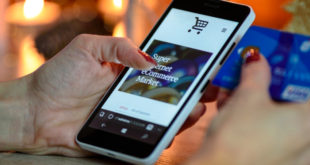Mark Appleby, Business Development Manager at Wireless Logic discusses the role cellular connectivity played in reducing the strain on the healthcare system during COVID-19 and beyond.
eHealth is a steadily growing industry that advanced hand-in-hand with connectivity and digital communication. For years, eHealth solutions have allowed healthcare providers the flexibility and freedom to take care of patients remotely, gradually easing the demand on a strained healthcare system that was under pressure even before COVID-19 took its toll.
When the COVID-19 pandemic began, hospitals and their staff were quickly overwhelmed with priority patients. The UK’s struggling healthcare system needed to allow as many patients as possible to receive medical care from the safety of their own homes, reducing overcrowding and unnecessary contact that could further transmit the virus.
As well as reducing the impact on ongoing healthcare systems – such as GP waiting times – cellular-enabled solutions offer a resilient and secure way to meet the ever-changing requirements of healthcare organisations.
eHealth and cellular
The impact of COVID-19 on an already-strained healthcare system meant there was an urgent need to be able to relieve this, by providing care to patients remotely in a way that wouldn’t risk further transmitting the virus. Both patients and care staff needed to stay safe, so by taking advantage of the Internet of Things (IoT) – enabled by cellular connectivity – people were able to still have their medical needs met remotely.
One of the effects of the pandemic on the eHealth sector was an accelerated need for reliable remote patient monitoring and independent living. For many years, Wi-Fi was predominantly relied upon within hospitals as a means of communicating data. However, as remote patient monitoring and assisted living became more crucial, the need for alternative communication types became clear. Cellular has become a key method for connecting these solutions as it allows quick and secure access to mobile networks without the need to rely on patients’ own home network. This development has been particularly significant for those (especially older generations) who may not have Wi-Fi in their homes, meaning they can still access medical support without the additional hassle and expense of having broadband installed.
As we steadily move through and past the pandemic, the healthcare system must continue implementing solutions that can support a growing population who are living longer, and who need medical care and assistance to do that. Crucially, this can be done using resilient, reliable and secure IoT technology in medical devices (whether used by healthcare workers, paramedics or even patients). Connecting these IoT devices to medical staff and organisations via cellular networks will allow for real-time monitoring of patients’ vital signs and the ability to rapidly transmit data back to a central hub.
Additionally, healthcare providers can take advantage of 4G connectivity for higher bandwidth applications that require fast and secure connectivity, or newer LPWAN networks for low latency, high-speed applications. This is ideal for devices that require longer battery life, or those that need to send large packets of data in a short space of time: often required for heart monitors, dialysis machines, wearables, or implants with cardiac and biometric sensors. These devices can track vital signs and send an emergency communication in real-time to care providers, or alert the patient to taking a specific action such as an at-home test.
Cellular connectivity has quickly become a key enabler of eHealth and related technologies, providing a controlled and secure method of communication that can work from any location. Managed cellular connectivity offers the potential to add significant levels of security when transferring data (as opposed to Wi-Fi or other connectivity methods), as well as the ability to provide connectivity for a large number of devices simultaneously. Specifically in the age of IoT, having extremely reliable and low-latency connectivity is paramount, particularly when even the slightest of delays can have the potential to cause severe consequences.
eHealth challenges during COVID-19
There is a significant need for existing healthcare systems to adapt in order to meet the challenges of the COVID-19 pandemic and the increase in an ageing population, focusing on meeting patient needs, keeping care-workers safe and ensuring processes are working efficiently. At the same time, new connectivity solutions can be embraced and implemented to address ongoing and upcoming issues for the post-COVID-19 era. The pandemic has further highlighted the need to embrace these solutions and has accelerated the adoption of eHealth technologies.
Smart healthcare systems provide patients and staff with more reliable and safe health services and environments through the use of IoT technology and cellular connectivity. By working with solution providers who can tailor full end-to-end solutions, the healthcare industry will be better equipped to support hospital environments, remote healthcare applications and disaster response units.
As a result of rapid actions of healthcare solution providers, we’re now seeing that cellular technology has already been transformative for the healthcare industry during COVID-19, in areas such as remote medical appointments, or by allowing the emergency services to quickly record patient data in the field. Indeed, a recent IEEE study highlighted how cellular-enabled technologies such as IoT have been at the forefront of helping the UK and other countries combat the COVID-19 pandemic and alleviate the strain on the healthcare system, reducing unnecessary human contact.
Security of eHealth
With private health data being transferred between people, locations and devices, the consequences of a data breach would be severe, whether the subject is personal health data, the results of a medical study, or pharmacy records. Wireless communication links are vulnerable to security threats such as eavesdropping, hamming and spoofing. Without secure links, external parties can access critical patient information or even manipulate data, potentially leading to fatalities. In addition, there is a risk of network disruption and reputational damage through loss of customer data and intellectual property.
Healthcare systems must ensure that health data can be shared in a trusted and secure way. Through the use of VPNs or direct interconnects, organisations are able to protect data whilst still communicating effectively with relevant parties. To support their security efforts further, healthcare systems should aim to work with a Managed Service Provider with ISO27001 certification, demonstrating that IoT security is being taken seriously. Ultimately this will create an ecosystem of secure data management and processing.
Hardware security is also increasingly pertinent. Expensive medical devices are being shared with patients, often taken off-premises and used for long periods of time. Healthcare organisations must be able to track and monitor these devices, as well as making sure they are being used for the right purpose. Methods such as IMEI locking can help to minimise financial loss by ensuring the SIM is locked to one particular device, while IP whitelisting can make sure that patients can only access the relevant content for the intended use-case.
Future of eHealth
Cellular connectivity and emerging technologies have played a significant role in reducing the impact of the COVID-19 pandemic and will continue to support a very strained healthcare system. When properly deployed, cellular connectivity enables secure, rapid and efficient communication between the hospital, remote care staff patients, and disaster response teams.
For healthcare solution providers, working with the right Managed Service Provider will ensure the right connectivity, network, security and hardware are selected to tailor a flexible and scalable solution to meet the requirements of the healthcare organisation, particularly as we see new and enhanced applications being developed.
Finally, with the ongoing development and roll-out of 5G technologies, this will further drive innovation and open up new and more effective ways of working. Once 5G coverage has been significantly improved (current coverage is only focused on major cities), healthcare systems will also benefit from increased speeds, more reliable coverage and crucially, reduced latency.
Read the latest edition of PCR’s monthly magazine below:
Like this content? Sign up for the free PCR Daily Digest email service to get the latest tech news straight to your inbox. You can also follow PCR on Twitter and Facebook.
 PCR Tech and IT retail, distribution and vendor news
PCR Tech and IT retail, distribution and vendor news




